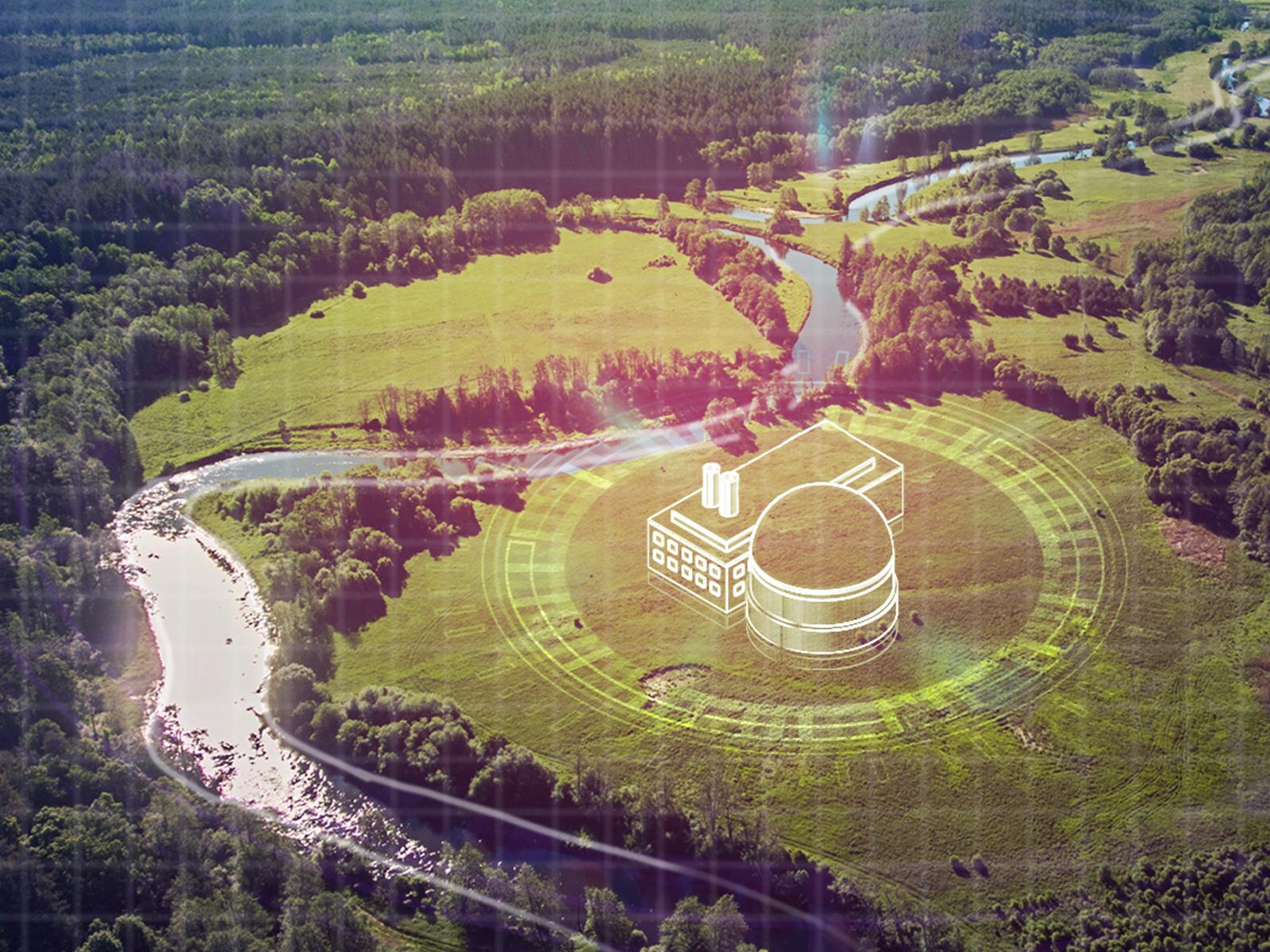By Kelsey Adkisson
Companies are developing smaller and safer reactor technology to meet rising energy demands. Long before an excavator breaks ground to construct a new nuclear reactor, however, there’s a multi-million-dollar licensing process to evaluate new designs. This process can take nearly half a decade to navigate.
The environmental analysis required by the National Environmental Policy Act (NEPA), for instance, and the associated time and cost commitment are factors in the innovation and deployment of advanced reactors.
Pacific Northwest National Laboratory (PNNL), Idaho National Laboratory (INL), and the National Reactor Innovation Center (NRIC) teamed up to adapt an approach that could save more than a year and millions of dollars in regulatory and vendor costs. The approach, called Plant Parameter Envelopes (PPEs), simplifies the NEPA process and reduces the environmental review time to between six and twenty-four months.
From permit to production takes years
With an aging fleet of reactors, the bipartisan Nuclear Energy Innovation Capabilities Act jump-started advanced reactor development and mandated the creation of NRIC, based at INL. The center is intended to give advanced reactor innovators both resources and a place to test new carbon-free power technology, such as the small, portable reactors that are being designed for natural disaster response.
But to build any reactor, the overarching permitting process is similar no matter how safe or how small. And it’s a long process for everyone.
It typically takes three to six years from the time an applicant submits an initial proposal until approval is received to begin construction. Approximately two to four years of that time is spent on the environmental review.
“When you’re looking at more than two years to do an environmental analysis for each proposed project, costs can add up,” said Bruce McDowell, PNNL senior advisor and the study’s co-author. “There is a need for innovation in terms of the technology as well as the regulatory process for siting and construction.”
Enveloping carbon-free power technology
The new, accelerated PPE approach uses pre-analyses for the range of impacts of a proposed advanced reactor technology demonstration.
“We’re essentially adapting a longstanding PPE concept that the Nuclear Regulatory Commission has used to efficiently analyze environmental impacts of reactor siting, construction, and operation prior to receiving specific applications from reactor vendors,” said Dave Goodman, JD, a PNNL environmental planning research analyst, and the study’s other co-author. When conducting an analysis using the PPE report concepts for projects, the outcomes will lead to better applications and faster, more consistent environmental reviews.
PNNL’s team developed parameters for the reactor plant and site, encompassing a wide array of potential designs and footprints. To see into the crystal ball of future reactor technology, the team surveyed innovators about upcoming advanced reactor designs, features, and plant and site requirements. Using that information, they developed a “surrogate” reactor that could be analyzed in a NEPA review to bookend the upper bound of any potential environmental impacts of an actual reactor siting.
The research team looked at variables including the physical size of the reactor, electricity versus heat output, coolants used, construction methods, and fuel types. Next, they assessed criteria for land use, water demand, transportation, workforce, potential waste, air emissions, and fission product inventories.
“The PPE approach will allow NRIC and our stakeholders to evaluate environmental impacts at a potential site before the reactor design is chosen,” said Ashley Finan, PhD, director of NRIC. “Establishing the environmental boundaries in advance—while the reactor technology, blueprints, and sites still are being determined—will result in considerable savings to industry and taxpayers, and will allow advanced reactor deployment to stay on pace to meet the world’s clean energy goals while safeguarding our environment.”
The report, Advanced Nuclear Reactor Plant Parameter Envelope and Guidance, provides details and analysis of two reactor size ranges: microreactors and small- to medium-sized reactors. Microreactors up to 60 MWt could be used to power isolated communities or critical infrastructure, particularly those currently using diesel generators. Some microreactor designs are so small they can fit on the back of a semi-truck and be a mobile response to natural disasters such as the recent hurricanes in Puerto Rico. Small- to medium-sized reactors include anything up to 1,000 MWt, which is enough to power a city the size of Atlanta.
What’s next
Incorporating this PPE surrogate reactor into the NEPA process will resolve and streamline project-specific review requirements by allowing for development of a shorter, simpler Supplemental National Environmental Policy Act analysis for a specific site and reactor design, as opposed to an entirely new and project-specific EIS.
“The hope is that this streamlined approach will spur further innovation and ideas for carbon-free nuclear power,” said Mark Nutt, PhD, PNNL manager for the nuclear market sector.
The research team includes PNNL’s Bruce McDowell, Dave Goodman, Mark Nutt, Tara O’Neil, Nicole LaHaye, Caitlin Condon, Kim Leigh, Dave Anderson, Phil Meyer, Steve Maheras, Pavlo Ivanusa, and Amoret Bunn. This work was also supported by NRIC, INL, and Leidos. This work was performed for and sponsored by NRIC.


